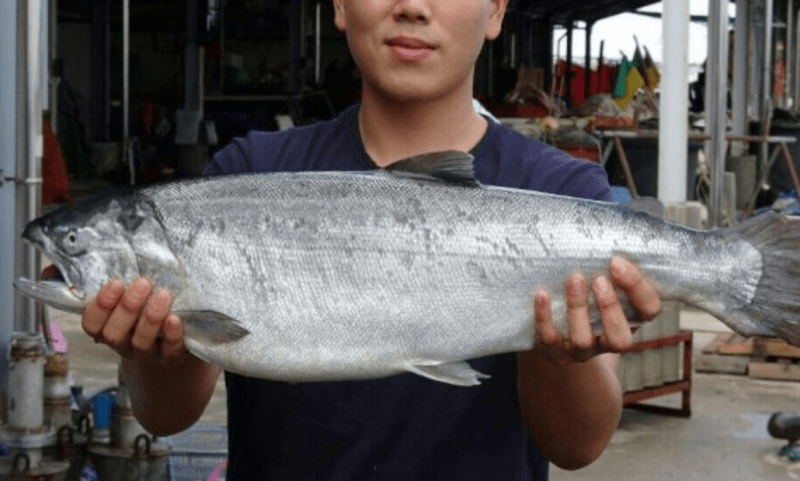Seoul searching for salmon sustainability
Research team raises steelhead in South Korean waters as nation’s appetite for sustainably farmed fish grows
By SeaWestNews
The rising demand for sustainably raised salmon in South Korea has led to a university team successfully farming American steelhead in the East Asian nation’s waters.
Led by professors Kim Min-sun and Lee Jang-won of Integrative Bio-industrial Engineering at Sejong University, a research team imported steelhead eggs from the US, raising juvenile steelhead in river waters and transferring them to sea water, the university said, according to local media reports.
In 13 months, the team succeeded in producing 1.3 kilograms of steelhead on Feb. 4.
South Korea has seen an increase in salmon consumption, with more than 40,000 tons of salmon — with a retail value of about 400 billion WON — imported from other countries as of 2019.
The Pacific Salmon Foundation states steelhead are similar to other Pacific salmon in many ways but for one main exception: they can be repeat spawners. Their classification as a salmon is debated by some scientists because of their repeat spawning.
The Sejong Institute of Salmonid Research also made progress in developing a vaccine to protect salmonid from illnesses, helping them better adapt to sea water and producing food for salmonid using insects.
The research centre, the country’s only institute dedicated to developing technologies to mass-producing salmon, aims to continue research and cooperation with industry to develop salmon-producing technologies, food for salmonid and vaccines to find new growth models for the country’s economy and food security.
In 2014, South Korean-based Donghae STF, a fisheries company, hatched salmon eggs imported from Canada, and raised them for 10 months at its aquafarm located in inland waters. After growing to 200 – 400 grams in size, the fish were moved to a sea farm in March 2015.
In order to maintain the surrounding water temperature at 15 – 18 degrees Celsius, the salmon were raised in a submersible fish cage that can be placed in waters up to 25 meters deep.
Following this venture, the South Korean government had announced that it will selectively open the fish farming business to conglomerates and set up a third management agency to guard the country’s southern waters from illegal Chinese fishing.
In a policy goal report for 2017, the Ministry of Oceans and Fisheries said it will allow large conglomerates to operate fish farms for salmon, bluefin tuna and other kinds that require high-cost facility investments. Companies with total assets of more than 500 billion WON (US$419.6 million) or annual sales of over 100 billion WON are eligible.
The size of allowed offshore farms will be enlarged to 60 hectares from the current 20 hectares, the ministry reported.
Ministry officials said the decision is based on the outlook that fish farming can become a lucrative industry when supported by the right technology and facilities. South Korea can have its own version of Norway’s giant seafood Marine Harvest (MOWI), they said.
Ministry officials played down worries that conglomerates’ entry into the business will hurt small-time fishermen, saying their areas of business do not overlap.
“Bluefin tuna and salmon both require large-scale facility investment,” Kim Jae-chul, who oversees fishing industry policy, said. “They do not fall into conflicting interests with ordinary fishermen. The fishermen understand that such fish farms need independent facilities and advanced technology.”
The policy goal also included establishing 10 high-brand fishing-themed villages as tourist attractions.
(Image courtesy of S.Korea Ministry of Oceans)

